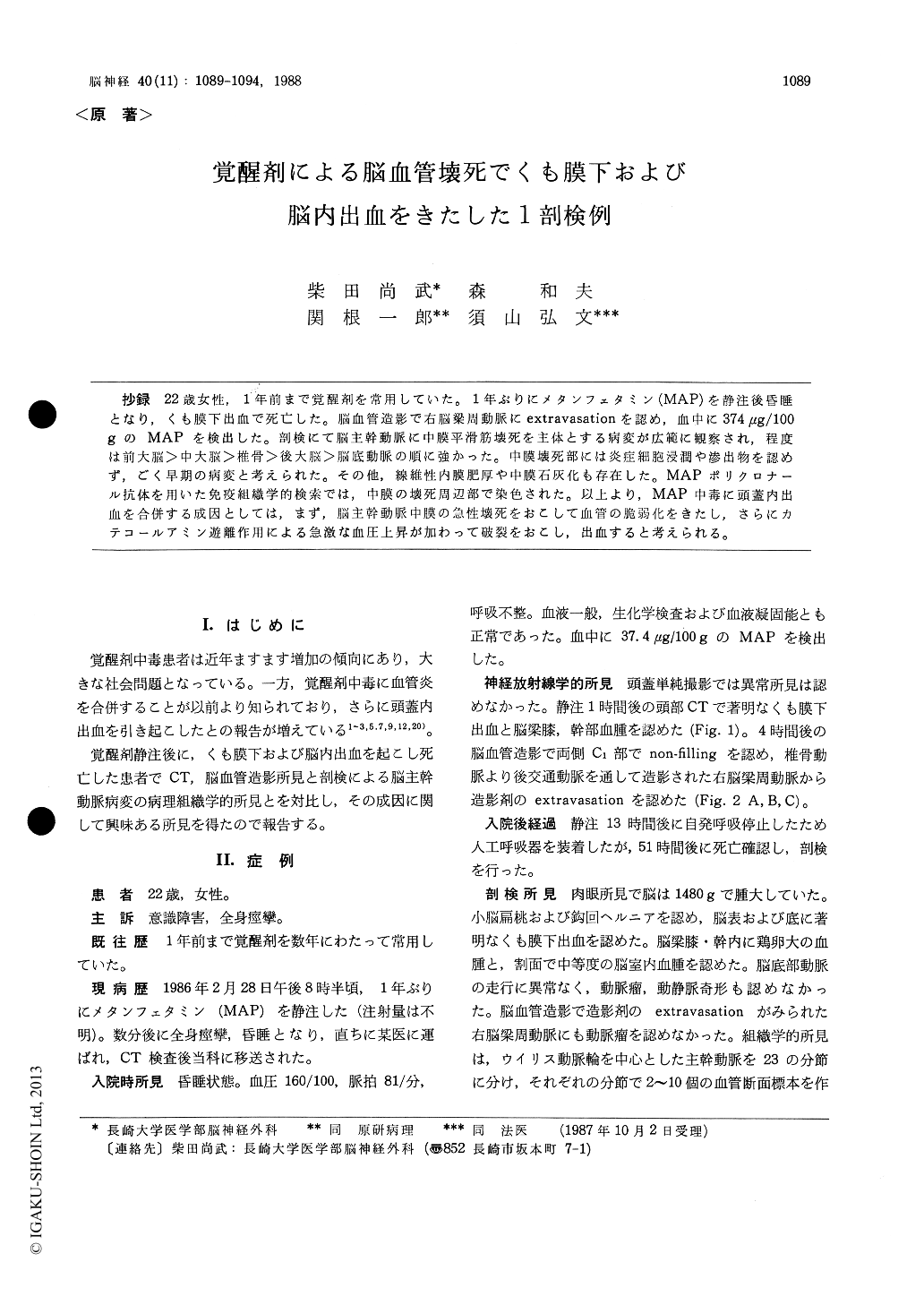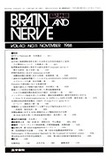Japanese
English
- 有料閲覧
- Abstract 文献概要
- 1ページ目 Look Inside
抄録 22歳女性,1年前まで覚醒剤を常用していた。1年ぶりにメタンフェタミン(MAP)を静注後昏睡となり,くも膜下出血で死亡した。脳血管造影で右脳梁周動脈にextravasationを認め,血中に374μg/100gのMAPを検出した。剖検にて脳主幹動脈に中膜平滑筋壊死を主体とする病変が広範に観察され,程度は前大脳>中大脳>椎骨>後大脳>脳底動脈の順に強かった。中膜壊死部には炎症細胞浸潤や滲出物を認めず,ごく早期の病変と考えられた。その他,線維性内膜肥厚や中膜石灰化も存在した。MAPポリクロナール抗体を用いた免疫組織学的検索では,中膜の壊死周辺部で染色された。以上より,MAP中毒に頭蓋内出血を合併する成因としては,まず,脳主幹動脈中膜の急性壊死をおこして血管の脆弱化をきたし,さらにカテコールアミン遊離作用による急激な血圧上昇が加わって破裂をおこし,出血すると考えられる。
We report an autopsy case of methamphetamine-related intracranial hemorrhage and vasculitis. The possible relationship between drug usage and the occurrence of intracranial bleeding and cerebral vasculitis in such patients is discussed.
A 22-year-old woman died after an intravenous injection of unknown dose of methamphetamine. A computed tomography head scan demonstrated massive subarachnoid hemorrhage and hematoma in corpus callosum. Cerebral angiography revealed nonfilling of bilateral intracranial carotid arteries and extravasation of contrast medium from right pericallosal artery which was visualized retrograde-ly via vertebral artery. Postmortem studies showde cerebral edema, subarachnoid and intracerebral hemorrhage, and intracranial vasculitis in the ab-sence of aneurysm, arteriovenous malformation or chronic hypertension. Histological findings ofnecrosis of blood vessel walls with destruction of the elastics and smooth muscle layer, and without leukocytotic infiltration of the blood vessel walls were observed in order of anterior cerebral, mid-dle cerebral, vertebral, posterior cerebral and basilar arteries.
These angiographic and histological evidence suggests that such hemorrhage results from the development of fibrinonecrosis in the large intra-cerebral vessels, in addition to a sudden rise in blood pressure.

Copyright © 1988, Igaku-Shoin Ltd. All rights reserved.


